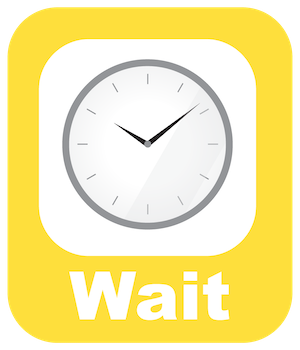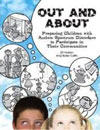Autism Center Grab and Go Resource Gallery of Interventions
Turn-Taking Supports
Discover how using turn-taking supports can help to teach the concept of how to wait and take turns. Turn taking occurs in a conversation when one person listens while the other person speaks, during leisure activities, and when interacting with others. People with autism sometimes struggle with abstract concepts, learning to wait, and taking turns. They may have questions that include: How long do I wait?; Where do I wait?; or When is it my turn? These interventions are designed to teach how and when to wait, and to promote different ways to take a turn to facilitate a conversation between a listener and a speaker. The following are examples of visual supports that may be helpful for teaching turn-taking.
- A wait card provides a method for visually teaching the concept of waiting. The card can be held by the individual while waiting for a turn, waiting in line to leave for recess, or can be placed on the item of interest while the individual waits for that item.
- The talking mouth provides a way for individuals to understand when to wait when someone else is talking. It can be used in small and large groups and with individuals. The teacher holds up the talking mouth graphic indicating who is talking. Individuals wait before talking out loud and/or asking/answering questions.
- A my turn/your turn card provides another way for two individuals to learn to wait for their turn during social interactions. The card is exchanged between the listener and the speaker while having a conversation, playing a game or other social opportunities.
Examples:

Intervention: Turn-Taking Supports
Video
Video shows a parent using a my turn card and a wait card with son at home during game playing
This video shows a preschool teacher and students using the wait/ my turn, your turn card.
Book Suggestions:

Out and About: Preparing children with Autism Spectrum Disorders to Participate in Their Communities
Jill Hudson & Amy Bixler Coffin
This book provides a framework for identifying the areas where an individual with ASD may need support to participate more fully and successfully in community activities. The framework, created as a Blueprint, outlines 10 tools to consider when identifying supports for students with ASD in relation to a particular community outing.